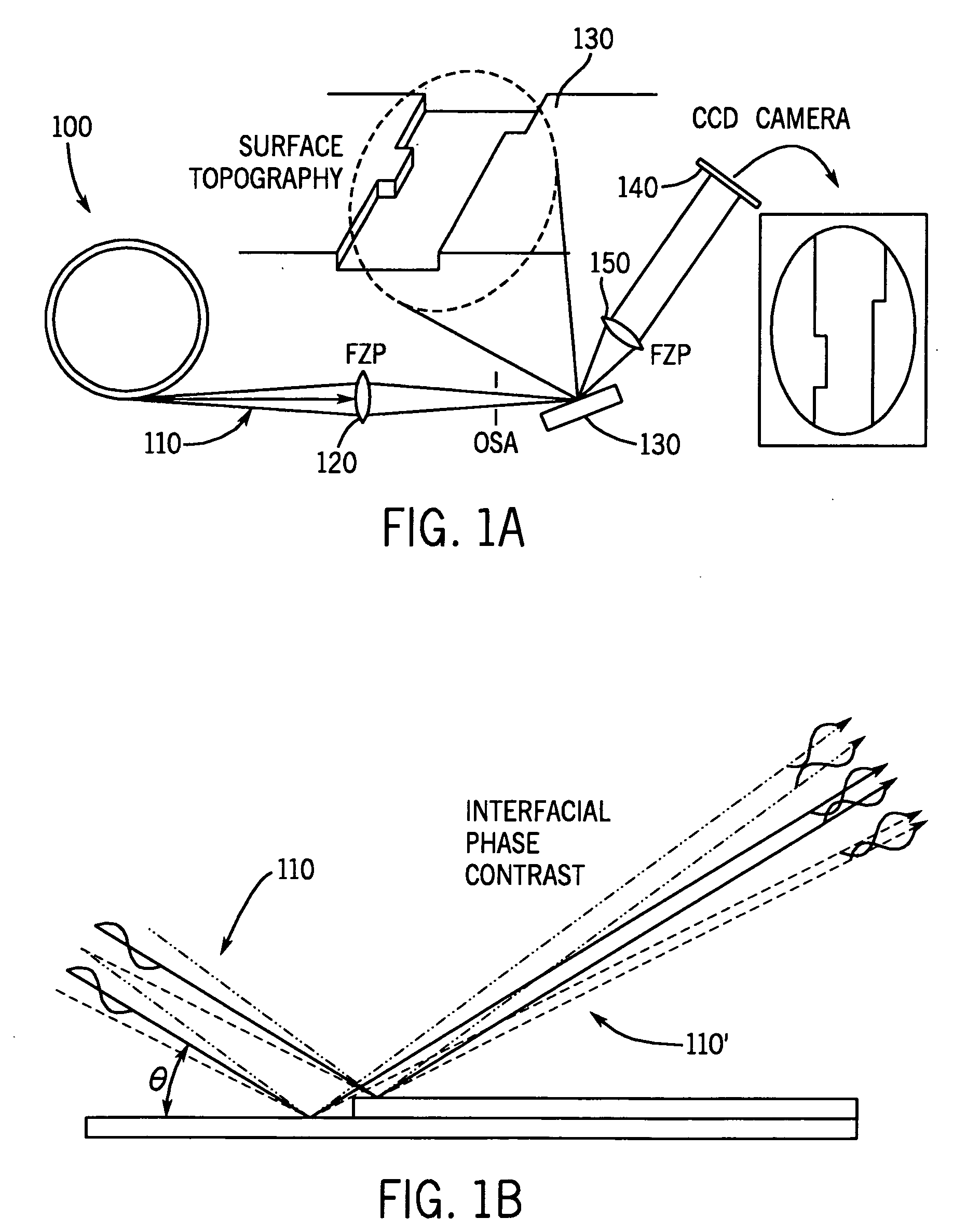Surface topography with X-ray reflection phase-contrast microscopy
- Summary
- Abstract
- Description
- Claims
- Application Information
AI Technical Summary
Benefits of technology
Problems solved by technology
Method used
Image
Examples
example
[0017]X-ray reflection contrast microscopy experiments were carried out at beamline 12-ID-D (BESSRC) at the Advanced Photon Source (APS) at Argonne National Laboratory in December, 2005. The APS undulator was set with its first harmonic at 10 keV. The X-ray beam was reflected from a nominally unfocused horizontal deflection high heat load mirror, and a monochromatic beam with a photon energy of 10.0 keV was selected with a silicon (111) double bounce monochromator. The sample was prepared by cleaving gem-quality orthoclase (KAlSi3O8) to reveal a fresh (001) surface and mounted on a sample holder and held in place with epoxy. The sample was mounted on a four-circle diffractometer so that the incident angle of the beam with respect to the sample surface could be precisely controlled and measurements were performed with the sample in contact with air. The reflected beam was imaged using an area detector mounted on the diffractometer detector arm.
PUM
 Login to View More
Login to View More Abstract
Description
Claims
Application Information
 Login to View More
Login to View More - R&D
- Intellectual Property
- Life Sciences
- Materials
- Tech Scout
- Unparalleled Data Quality
- Higher Quality Content
- 60% Fewer Hallucinations
Browse by: Latest US Patents, China's latest patents, Technical Efficacy Thesaurus, Application Domain, Technology Topic, Popular Technical Reports.
© 2025 PatSnap. All rights reserved.Legal|Privacy policy|Modern Slavery Act Transparency Statement|Sitemap|About US| Contact US: help@patsnap.com



